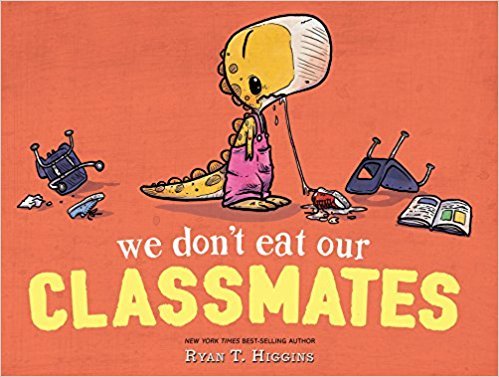
How can I distill a story into a brief summary?
 Read We Don't Eat Our Classmates by Ryan T. Higgins.
Read We Don't Eat Our Classmates by Ryan T. Higgins.
AASL: I.B.3 - Learners engage with new knowledge by following a process that includes generating products that illustrate learning; I.C.1 - Learners adapt, communicate, and exchange learning products with others in a cycle that includes interacting with content presented by others; III.D.1 - Learners actively participate with others in learning situations by actively contributing to group discussions; IV.B.4 - Learners gather information appropriate to the task by organizing information by priority, topic, or other systematic scheme.
Common Core: RL.4.2 - Summarize the text; RL.4.6 - Compare and contrast the point of view from which different stories are narrated; SL.5.2 - Summarize a written text read aloud
Rhode Island Cross-Curricular Proficiencies: Communication - Communicate understanding and interpretation of information; Problem Solving and Critical Thinking - Implement a plan or process of approach using tools and information.
Rhode Island School Library Curriculum Priority Skills: 1.1 - Summarizes information; states the main idea with some supporting details; 3.2 - Actively contributes to group discussions